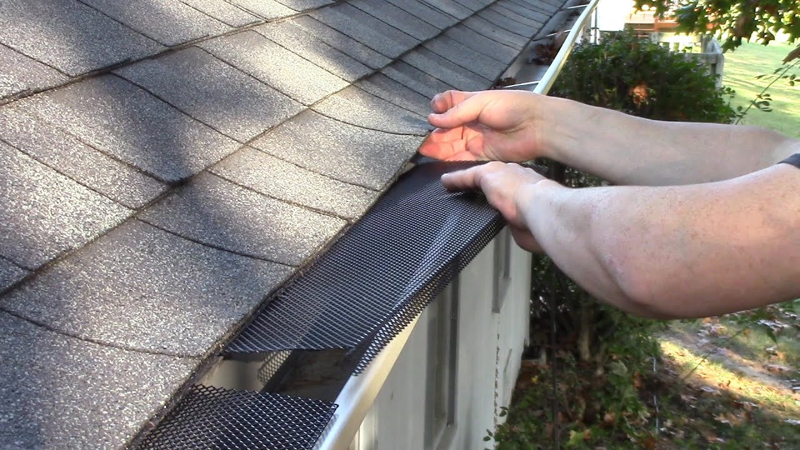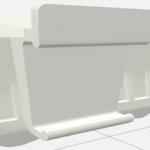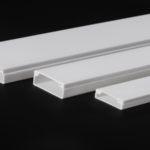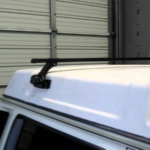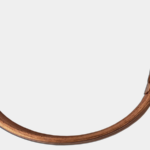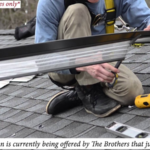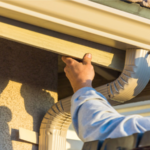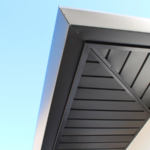- Begin by measuring the length of the gutter run. This will determine the number of gutters and downspouts you will need.
- Cut the gutters to size using a hacksaw or power saw. Make sure the cuts are straight so that the gutters will fit together properly.
- Install brackets along the length of the gutter run. These will support the gutters and help to keep them level.
- Hang the gutters on the brackets and check to make sure they are level.
- Install the downspouts at the end of each gutter run. Make sure the downspouts are installed so that they slope down slightly, away from the building.
- Connect the gutters to the downspouts using elbows or connectors.
- Seal the joints between the gutters and downspouts with caulk or sealant.
- Check the gutters and downspouts to make sure there are no leaks.
How do you install galvanized gutters?
Installing galvanized gutters is a relatively easy process that can be completed in a few hours. The first step is to measure the length of the fascia board that the gutters will be attached to. Next, cut the gutters to size using a hacksaw. It is important to make sure that the gutters are cut at a slight angle so that water will drain properly.
Once the gutters are cut to size, the next step is to install the hangers. Hangers should be spaced evenly along the length of the gutter. The hangers can be attached to the fascia board using screws or nails.
After the hangers are in place, the gutters can be hung on the hangers. Once the gutters are in place, the downspouts can be installed. The downspouts can be attached to the gutters using brackets.
Once the downspouts are in place, the gutters can be filled with water to test for leaks. If there are any leaks, they can be sealed with caulk.
What is the proper way to install gutters?
There is no one-size-fits-all answer to this question, as the proper way to install gutters depends on the specific circumstances of your home. However, there are some general tips that can help you ensure that your gutters are installed correctly.
First, it is important to choose the right type of gutter for your home. There are many different types of gutters available on the market, so you will need to do some research to find the best option for your needs. Once you have selected the right type of gutter, you will need to measure the length of your eaves and select the appropriate size.
Next, you will need to mark the location of the gutters on the fascia board. Once the locations are marked, you can begin installing the hangers that will support the gutters. It is important to ensure that the hangers are installed correctly, as this will prevent the gutters from sagging or pulling away from the fascia board.
After the hangers are in place, you can then begin installing the gutters themselves. Start by attaching the front of the gutter to the hangers, and then work your way towards the back. Make sure that the gutters are level as you install them, and use sealant to seal any joints or seams.
Do you nail or screw gutters?
Nailing gutters is not recommended because the nails can work their way out over time and cause the gutters to come loose. Screwing gutters is a better option because the screws will hold the gutters more securely in place.
How do you attach metal gutters?
To attach metal gutters, you will need to use a gutter sealant or caulk. You will also need to use screws and washers to secure the gutters to the fascia board. The screws should be placed every 12 inches, and the washers should be placed under the head of the screw.
Should gutters be tucked under drip edge?
The answer to this question is a bit complicated and depends on a few different factors. First, it is important to know that there are two types of gutters: those that are tucked under the drip edge and those that are not. Second, it is important to understand the purpose of each type of gutter.
The purpose of a gutter is to collect and channel water away from the foundation of a house. This is important because water can cause serious damage to a house if it is allowed to seep into the foundation. Gutters that are tucked under the drip edge are less likely to collect leaves and other debris, which can clog the gutters and cause them to overflow. However, they are also more likely to leak, because the seal between the gutter and the drip edge is not as strong.
In general, it is best to have gutters that are not tucked under the drip edge. This is because they are less likely to leak and they will do a better job of channeling water away from the house. However, if you live in an area with a lot of trees, you may want to consider having gutters that are tucked under the drip edge, because they will be less likely to clog.
Are galvanized gutters better than aluminum?
There are a few key factors to consider when making the decision of aluminum vs galvanized gutters. Aluminum is a softer metal than galvanized steel, making it more susceptible to denting and damage. Galvanized steel is more durable and can better withstand heavy rainfall and debris. Galvanized gutters will also last longer than aluminum gutters, with a lifespan of 20-30 years compared to aluminum’s 10-15 year lifespan. In terms of cost, galvanized steel gutters are slightly more expensive than aluminum gutters. However, the long-term durability and lifespan of galvanized gutters make them the better investment in the long run.
Are galvanized steel gutters good?
Galvanized steel gutters are a good choice for many homes and businesses. They are durable and last long, which is why many people choose them. However, there are a few things to keep in mind when selecting galvanized steel gutters. First, they can be more expensive than other types of gutters. Second, they require more maintenance than other types of gutters.
Final Word
Galvanized steel gutters are a great way to protect your home from water damage. However, it is important to install them properly in order to ensure that they work properly. Follow the tips in this article to ensure that your gutters are installed correctly.
